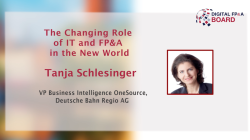Rolling Forecast held great promise when first introduced 20 years ago, but has a mixed track record on actually delivering on hoped-for improvements
In today’s volatile environment, standalone digital improvements are rarely enough. Increasingly, there is an accelerated need to truly combine human and technological capabilities.
In this paper, we will explore these different areas to explain what they are, how they have benefited other organisations and the steps an organisation can take in making the transition.
I hope to show the analytical power that is now available to the FP&A practitioner and how it can drive business change in a structured manner; a method that involves considerably less effort than I had to apply all those years ago.
Digitized FP&A Business Partnering is now the latest trend that is going well beyond just Finance involving the entire organization to move FP&A and planning to the next level.
Traditional FP&A systems are typically focused on one aspect of the management process. For example, setting a budget, collecting a forecast, or delivering results in the form of a report pack.
Over the past 20 years, there have been concerted efforts to combine these processes into a single system – after all, what’s the point of a budget if you can’t report against it or collect a forecast to see if year-end goals are going to be achieved?
Pagination
Subscribe to
FP&A Trends Digest

We will regularly update you on the latest trends and developments in FP&A. Take the opportunity to have articles written by finance thought leaders delivered directly to your inbox; watch compelling webinars; connect with like-minded professionals; and become a part of our global community.






